Seaweeds of the South African South Coast


Order Ectocarpales
Family Acinetosporaceae
Hincksia sandriana (Zanardini) P.C.Silva in Silva, Meñez & Moe 1987: 130
Plants brown, densely tufted, usually epiphytic, 0.5 – 5 cm long, attached by a mass of descending rhizoids that often arise above the basal cells of the filaments and cover them; branching spiral below and unilateral/adaxial above. Filaments widest in mid-regions, tapering gradually towards apices and slightly towards bases; in mid regions 20-30 (-50) µm in diameter, cells 0.5 – 1.2 times as long as broad. Meristems at base of each branch and sometimes intercalary. Cells with many discoid plastids each with one pyrenoid.
Plurilocular sporangia sessile in secund adaxial rows, often several to many on adjacent cells in a series; sporangia elongate –ovoid to conical, broadest in the middle, apex roundly tapering; apices often slightly curved. Sporangia 30-85 x 18-45 µm . Material collected from the Kowie with some unilocular sporangia, measuring 45-50 x 17-20 μm. (Unilocular sporangia reported in Australia, on the same plants as plurilocs: sessile, scattered or in rows, ovoid, 30-35 µm x 20-40 µm ).
Collections ecology and regional distribution
Recorded only from Tsitsikamma and Kowie Estuary (32-39), the latter on Polysiphonia kowiensis and bearing unilocular sporangia.
World distribution: widespread in temperate and tropical seas (Guiry & Guiry 2011).
Type locality: Croatia (Silva et al. 1996).
Note: a possibly undescribed species of Hincksia was found on an entity found on Polysiphonia kowiensis in the Kowie Estuary. The thallus is ca. 10 mm tall. Cells are ca. 35 μm long at maximum, cylindrical, up to twice as long as broad. The filaments taper gradually to the apices. Rows of about four plurilocular sporangia are arranged on the first cells at the base of the laterals, ripening in acropetal sequence (the opposite order to H. mitchelliae). The plurilocular sporangia are rather broad below, gradually tapering to a point, measuring ca. 100 (- 175) X 35 μm (specimen slide number EC 1908 – see photograph).
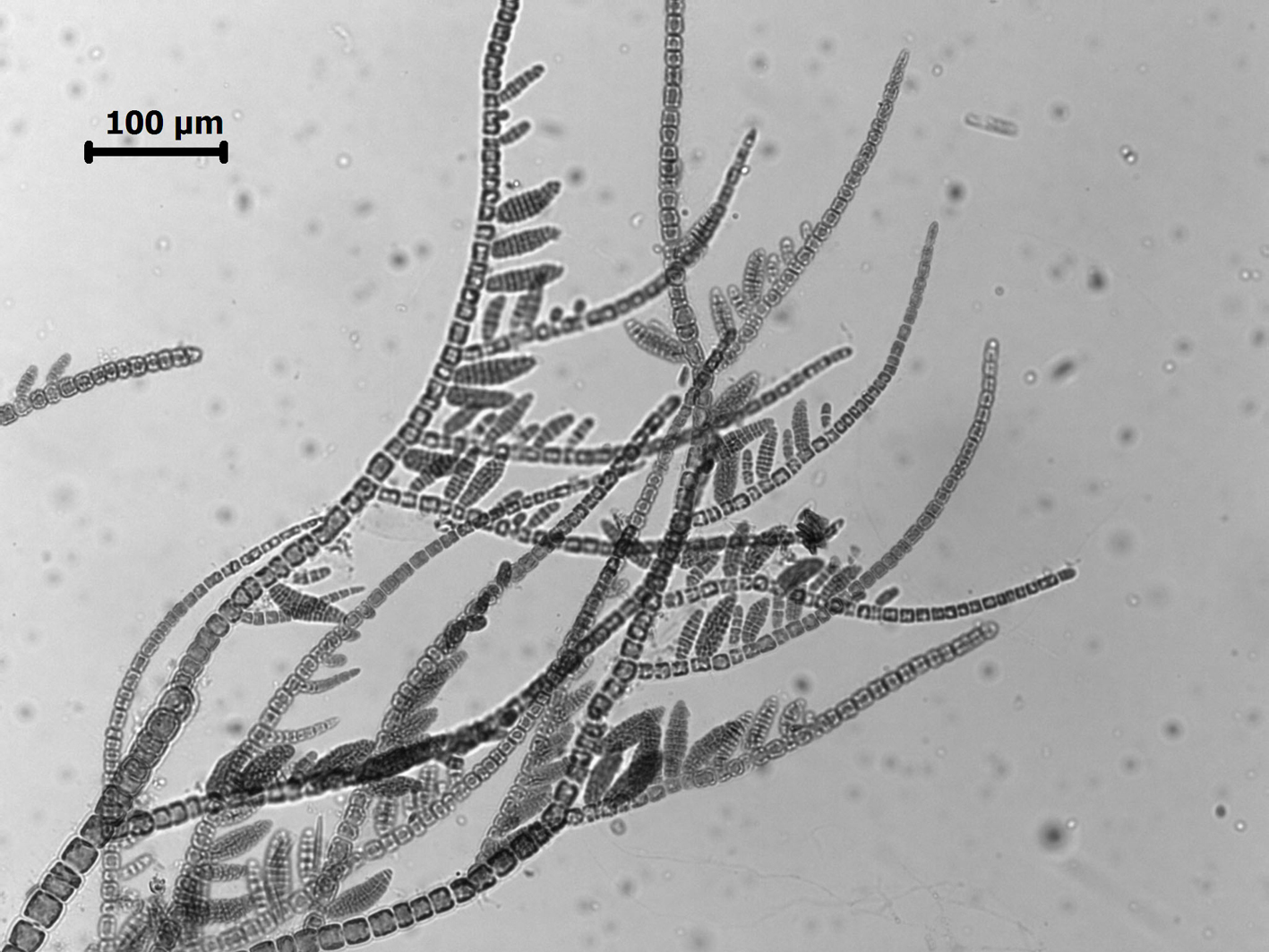
Hincksia sandriana.
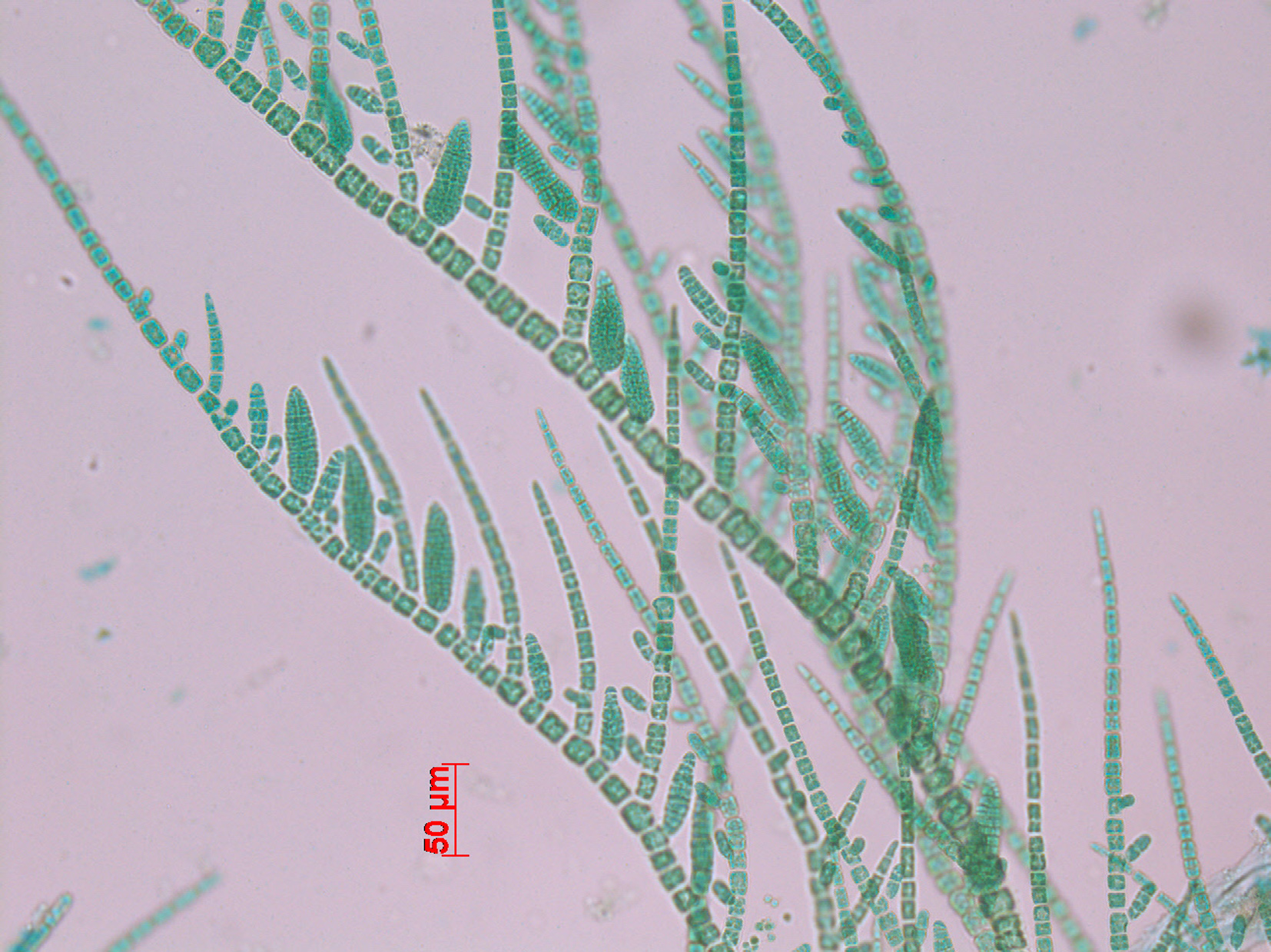
Hincksia sandriana, Kowie Estuary.
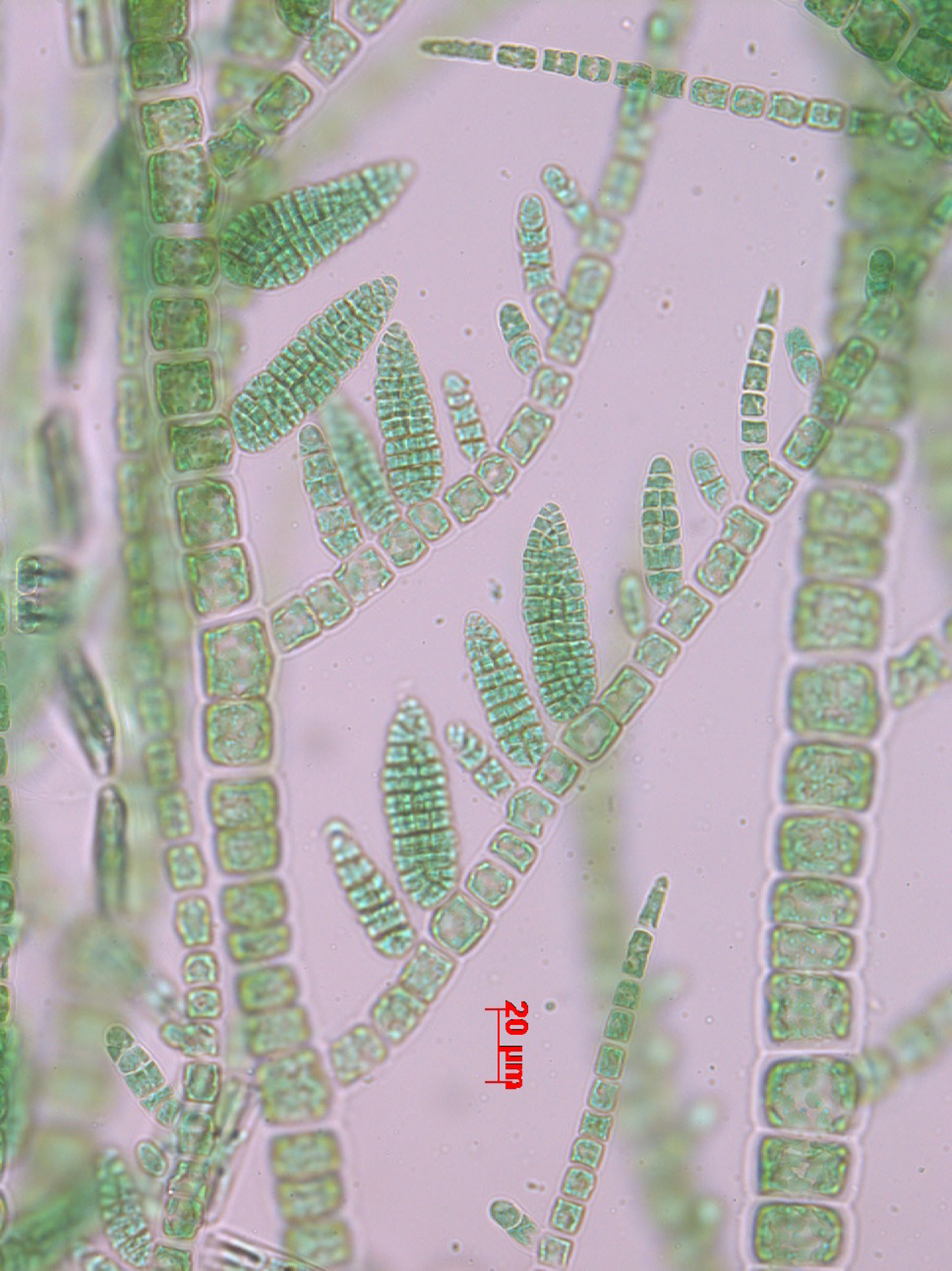
Hincksia sandriana, Kowie Estuary, detail of plurilocular sporangia.
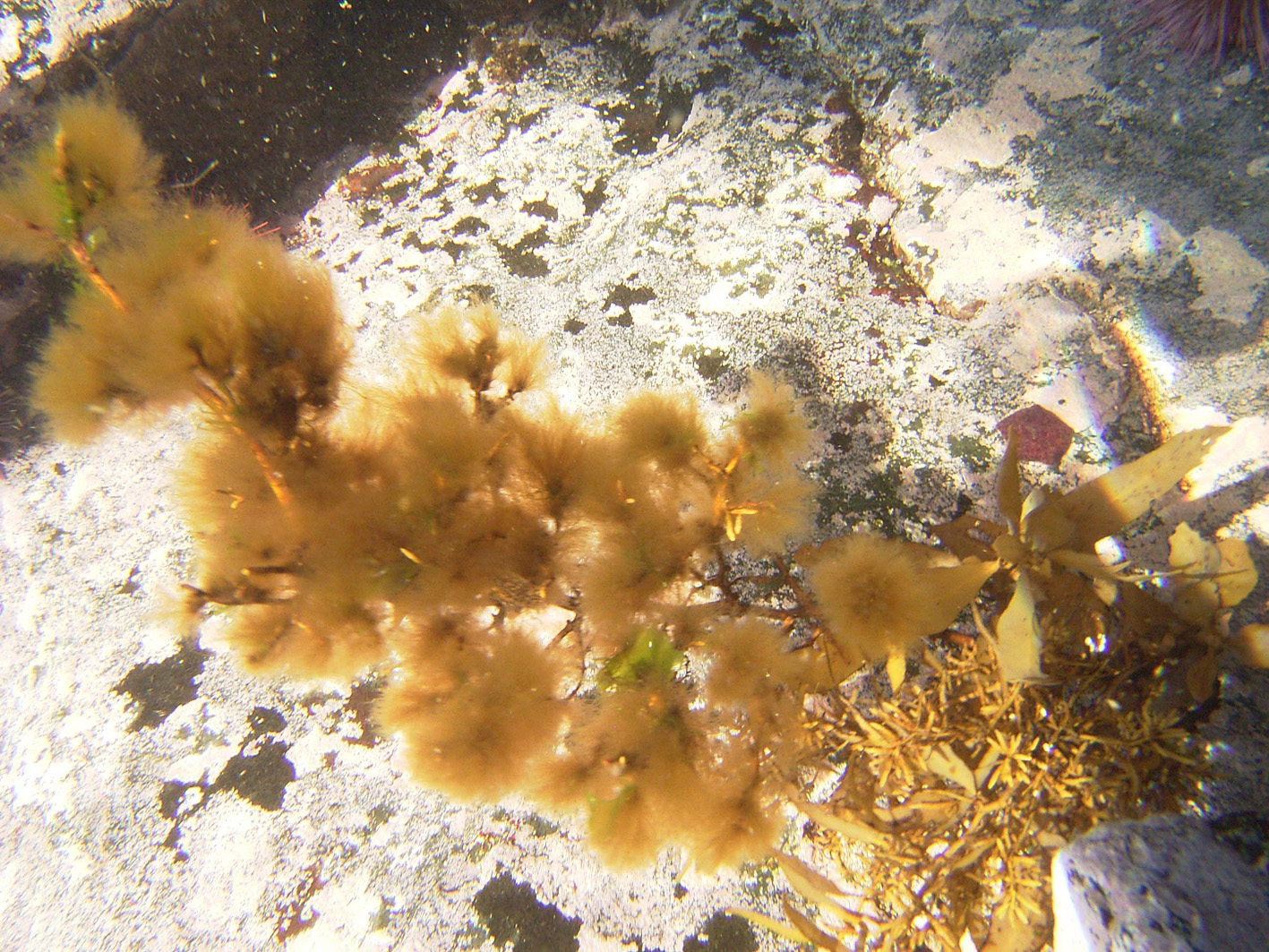
Typical brown tufts of an unnamed Hincksia on Sargassum in a Tsitsikamma rock pool.
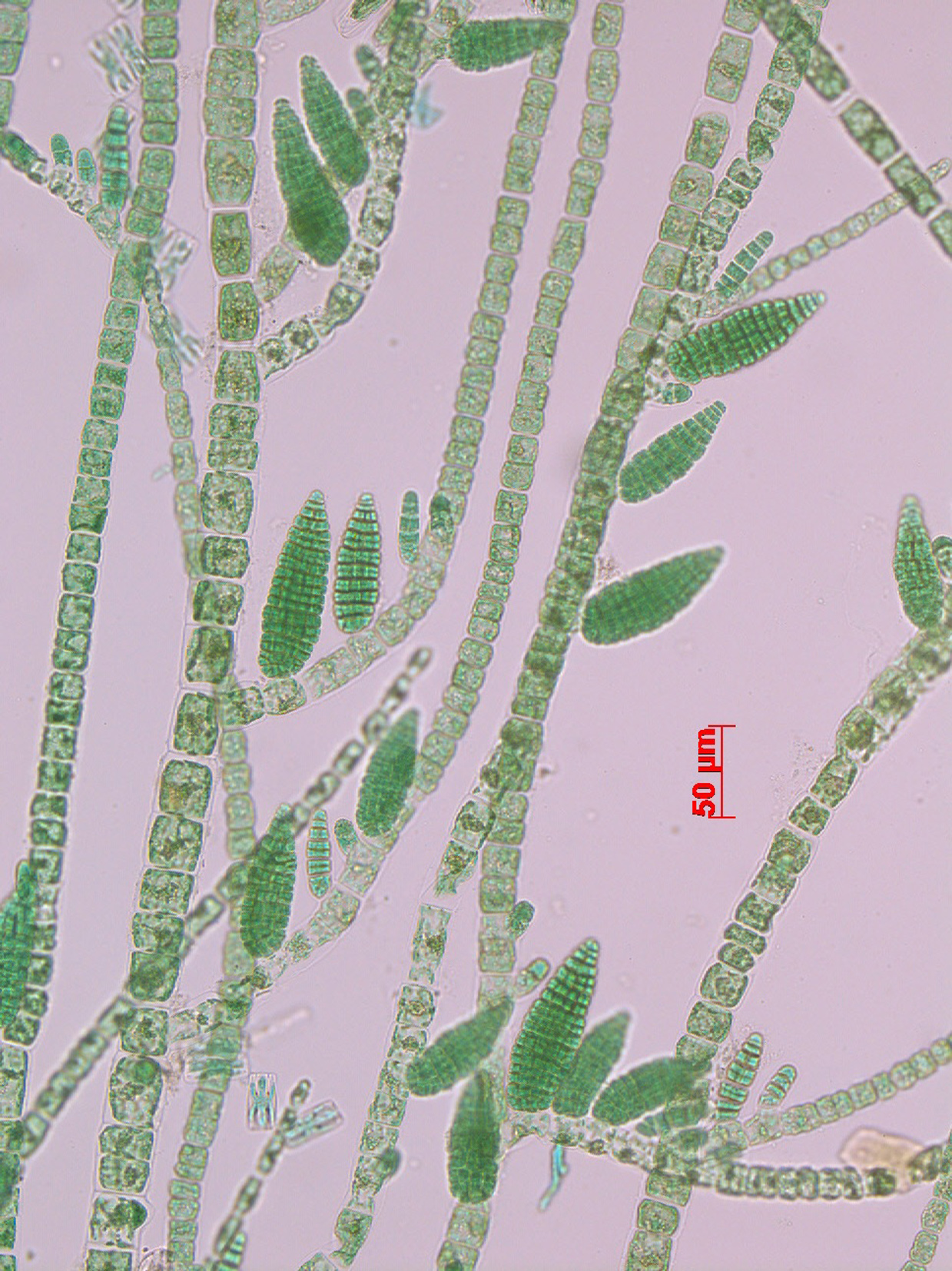
Hincksia sp, probably undescribed (see note under H. sandriana).
References Hincksia sandriana
Guiry, M.D. & Guiry, G.M. 2011. AlgaeBase. World-wide electronic publication, National University of Ireland, Galway. http://www.algaebase.org; searched September 2011.
Silva, P.C., Meñez, E.G. & Moe, R.L. (1987). Catalog of the benthic marine algae of the Philippines. Smithsonian Contributions to Marine Sciences 27: [i-ii] iii-iv, 1-179, 2 figs, 1 table.
Silva, P.C., Basson, P.W. & Moe, R.L. (1996). Catalogue of the benthic marine algae of the Indian Ocean. University of California Publications in Botany 79: 1-1259.
Cite this record as:
Anderson RJ, Stegenga H, Bolton JJ. 2016. Seaweeds of the South African South Coast.
World Wide Web electronic publication, University of Cape Town, http://southafrseaweeds.uct.ac.za; Accessed on 07 December 2025.